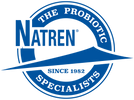Probiotics have become one of the more fashionable buzzwords in the healthy living community – and for good reason. True probiotics offer a host of notable benefits, particularly for healthy digestion and strong natural defenses. Lately though, many consumer products are boasting the label of “probiotics” without being rooted in fact or function.
A true probiotic is a living bacterial culture that has been identified by scientific research to provide health benefits. As well as being alive and active, a product must contain a certain amount of probiotics to be effective, and those bacteria strains have to be the right kind. Those combining factors means there are a lot of products, out on the market that have a misleading probiotic label.
One of the latest trends is household products – cleaners, soaps, mattresses, etc. – that are claiming to be probiotic. So far, the only scientifically-backed health application of probiotics is for the digestive system, but many brands are taking the health claims and applying them to products that don’t make sense. For example, a so-called “probiotic” mattress doesn’t have a very effective delivery system for the human body!
There are three important things that make a probiotic safe and effective:
- Bacteria must be alive when it reaches the gut. A major factor in the ineffectiveness of probiotic claims on household products is these items are unlikely to keep the bacteria alive. It’s nearly impossible for products like household cleaners or mattresses to keep bacteria alive long enough to have benefits. Living bacteria needs something to feed on to survive, and there’s no scientific basis that household products can provide substance for probiotics to stay alive. Dead bacteria has no benefits.
- It must be the right bacteria. The probiotics must be alive to be effective and they also need to be the correct strain. Any bacteria – or combination of bacteria – will not deliver the same effects. Product manufacturers that aren’t educated in the science of live bacteria could create a product that – at best – is a snake oil or – at worst – is a harmful product.
- There has to be enough probiotic cells. This one is particularly problematic because there are no regulations whatsoever on how much bacteria should be present in a product to claim it has probiotic benefits. In order to be effective, the beneficial bacteria in probiotics must be delivered and survive in sufficient quantities – measured in the billions of colony forming units (CFUs).
Ultimately, the problem comes down to correct and regulated labeling for probiotic products. Claims that probiotics can be live, active, and able to enter the body from a household cleaner or a mattress are outrageous. Currently, neither the FDA nor the USDA have regulations in place to keep the consumer safe and knowledgeable about probiotic products.
Not only are many of the household products boasting a probiotic label without delivering any benefits, the consumers are being misled and tricked out of money. It’s unethical to make claims without evidence just because probiotics are currently a popular topic.
Perhaps the most frustrating part is the lack of regulation in probiotic labeling. The use of probiotics in healthcare is a promising and emerging area, and only gets damaged and sidelined when unverified claims are made about products that simply do not make sense. This makes it more difficult and confusing for consumer to know what products are helpful, and which ones are marketing scams. This problem is compounded when you realize that the vast majority of multi-strain probiotics are manufactured by a single contract manufacturer, who provides white-labeled probiotics to marketing-based companies that have little regard for scientific health claims. Natren is still the only probiotics manufacturer that has taken the time to understand the science behind probiotics, and researches, formulates and sells it’s own line of probiotics based on scientific scientific study.
Our guidance: If it is a refrigerated, proven dietary supplement of scientifically selected beneficial bacteria strains from a reputable manufacturer – that’s a Probiotic. The rest – that’s Snake Oil.
The post Probiotics, Household Products, and Snake Oil appeared first on Natren Probiotics Blog.




0 comments